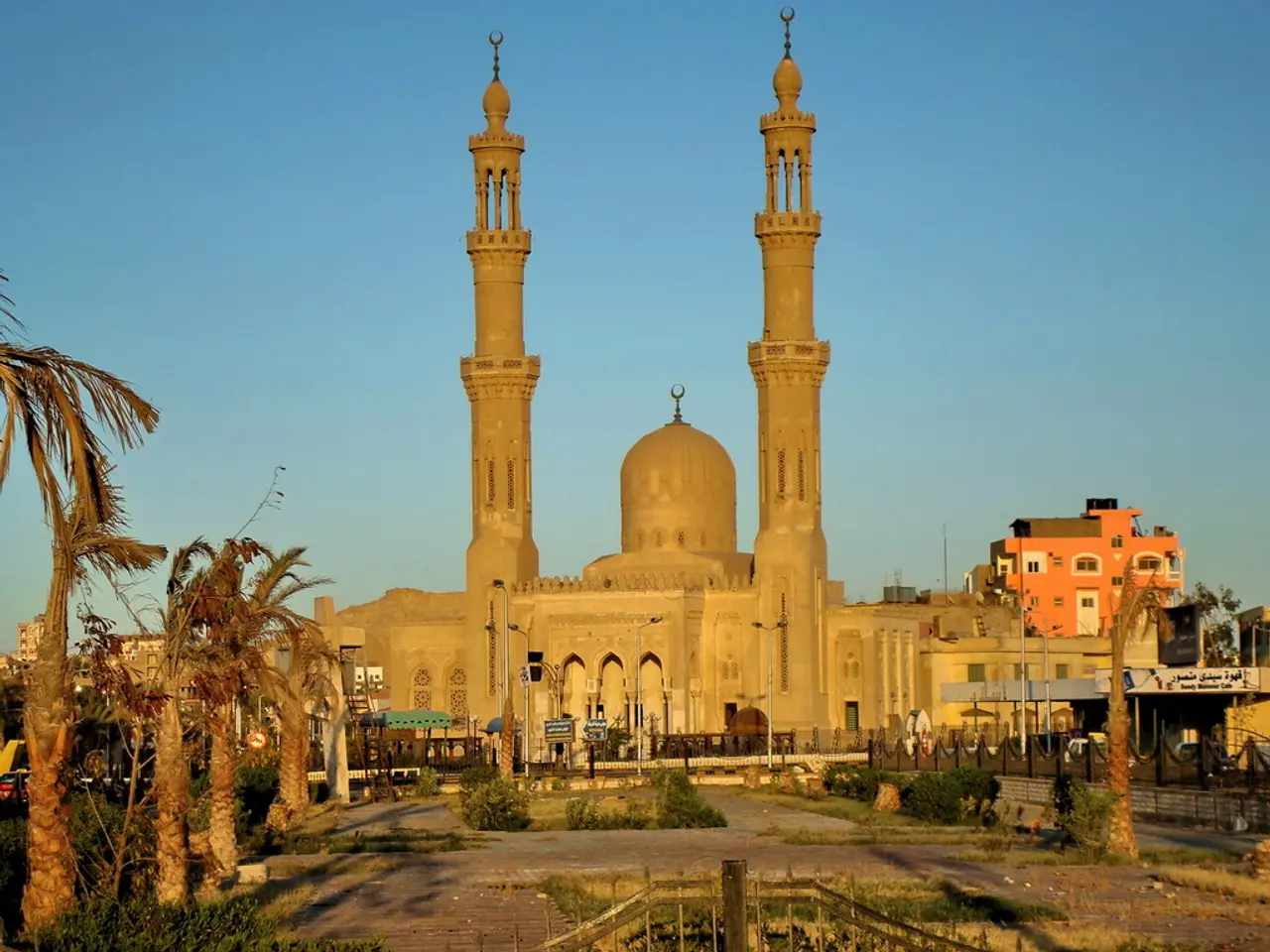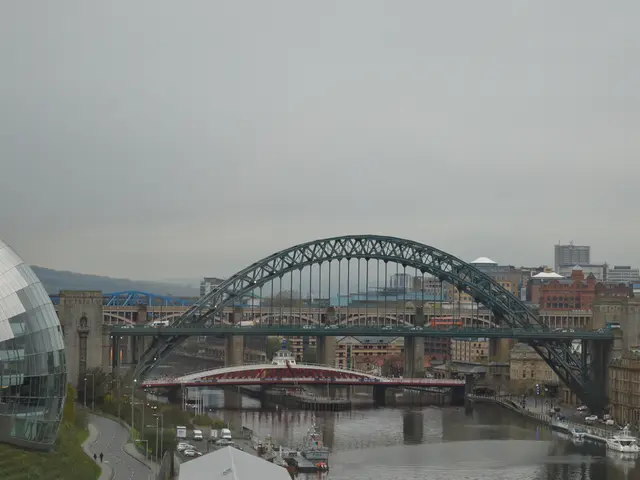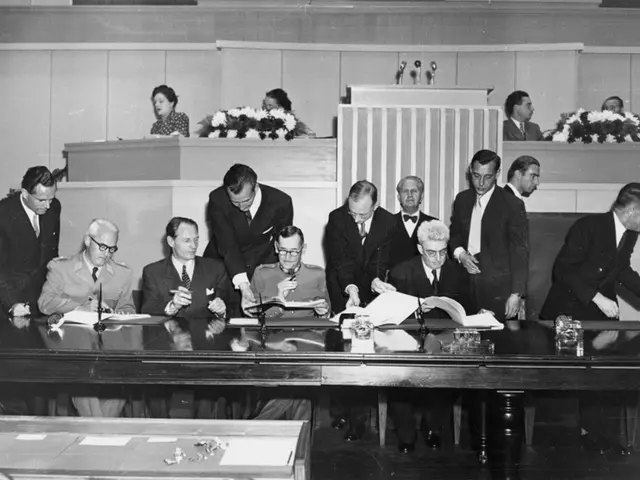Government introduces strategic blueprint for structured accommodation for expatriates due to escalating population strain
In an effort to address the growing residential demand, particularly for migrant workers, Kuwait is actively developing several major housing complexes. These projects, including Al-Mutlaa City, South Saad Al-Abdullah City, and South Sabah Al-Ahmad City, are being built outside central Kuwait City on new urban sites [1].
The new housing complexes, such as those in Jahra and Ahmadi Governorates, aim to house approximately 275,000 workers, easing pressure on family residential areas in Kuwait [2]. These complexes will feature balanced urban designs, including allocated areas for housing, commercial activities, services, green spaces, infrastructure, and internal roads [3].
The Public Utilities Company is responsible for managing existing workers' cities and planning expansions to increase capacity [4]. These new complexes will be built to the highest environmental and planning standards in selected locations outside family residential zones [5].
The housing crisis in Kuwait, highlighted by security issues in Jleeb Al-Shuyoukh, underscores the urgency of this initiative. Current migrant workers often live in overcrowded, informal areas like Jleeb al-Shuyoukh, characterized by poor living conditions and vulnerability to extreme heat and weather events [2]. The new housing projects are positioned as a transformative step away from such congested informal neighborhoods.
These large-scale housing complexes significantly contribute to expanding Kuwait City's urban footprint by developing new planned cities outside the traditional urban centers to accommodate population growth [1]. This expansion is critical given the limited available urban land and high property demand in existing developed areas [3].
As for crime reduction, while direct evidence is absent, better housing conditions and planning typically reduce problems related to overcrowding and informal settlements affecting crime levels, suggesting a likely positive effect [6]. By replacing congested migrant labor neighborhoods like Jleeb al-Shuyoukh with structured housing, these projects could contribute positively to community stability and security.
In addition to addressing humanitarian and urban challenges, these projects serve as a crucial security measure by reducing slum-like conditions that facilitate crime [7]. The new complexes are designed to create integrated environments that prioritize health, safety, and quality of life [8].
Construction has begun on a 40,000-square-meter complex in Subhan, with additional large-scale projects underway in Amghara and northern West Shuaiba [9]. The focus of these projects is to provide modern housing, infrastructure, and services to tens and hundreds of thousands of residents, including migrant workers.
These projects represent Kuwait’s strategic effort to improve migrant worker living conditions and support sustainable urban growth in the country [1][2][3]. Organized worker housing near industrial and commercial zones is expected to improve living conditions and enhance security oversight.
Sports facilities will be incorporated into these new housing complexes in Jahra and Ahmadi Governorates, offering recreational activities for the 275,000 workers slated to reside there. This aims to promote a balanced urban lifestyle, enriching the community and improving the overall quality of life for the migrant workers.
The provision of sports facilities in these integrated environments, prioritizing health, safety, and quality of life, can contribute to a more stable and secure community, reducing crime and enhancing community cohesion.





